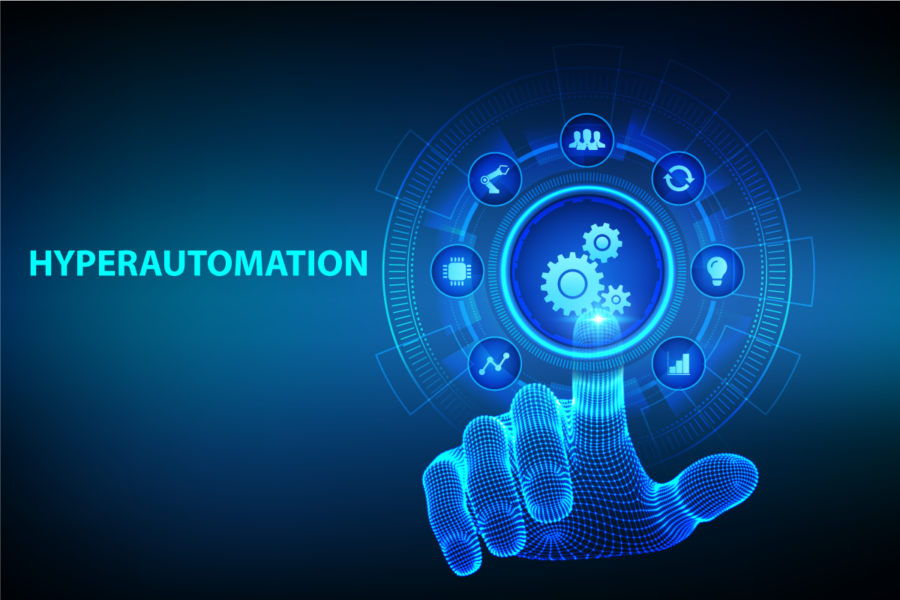Although automation isn’t a new concept, Artificial Intelligence (AI) and Machine Learning have opened up new avenues for its use, making it a game-changer for businesses worldwide. This article will discuss Hyperautomation Services and its journey from automation to the driver of digital transformation.
Hyperautomation and its Benefits
Hyperautomation is a systematic automation technology to streamline an organization’s operations. It is possible using tools, mainly AI-based, but these tools must be used correctly and monitored for effectiveness. These are just a few of the many benefits available:
Time-saving
A complete automation pipeline can bring benefits to a process. Managers and executives can assess the appropriate Key Performance indicators (KPIs). Project managers should use these KPIs to guide their decision-making throughout a project’s lifetime. It is not a way to cut time but to improve quality. It’s also possible to use simplification.
Less Coding
Developers are familiar with the DevOps Pipeline. Once, activities like testing, deploying and user testing were part of an assembly line. Different people had different skills and tools, and each was working towards a different goal. But now, everything is code. Processes are automated; hence time-consuming steps are avoided.
Simplification of processes
Software tools are now commonplace for developers. They can use the same functionality to simplify and integrate all types of processes. Hyperautomation may even reduce the amount of code an organization needs. It doesn’t mean developers are eliminated, but it allows them to focus more on interaction and application logic than queries and procedural programming.
Safety and security
Hyperautomation can be used in many situations to increase safety and security in the workplace. It is tied to Robotic Process Automat (RPA, despite their name, are process-driven software activities) and Artificial Intelligence, primarily Machine Learning, which can help improve safety and security both from a physical and logical perspective. Hyperautomation, for example, can be used to integrate various tools within an organization’s cybersecurity environment. Security solutions are often designed to achieve different goals and are not well integrated. As long as the appropriate policies are in place, It can help make cybersecurity more efficient.
Hyperautomation trends to be followed in 2023
Robotic Process Automation, or RPA, is the first. It should not be confused with Artificial Intelligence. AI is all about classifying and predicting in a data-driven manner, but RPA will focus on workflows in an AI-like way. Instead, RPAs will use a pre-planned process.
RPA’s task is not to find new things but to make sure things run as planned and in the most efficient manner possible. RPA and AI can, and should, be combined to manage complex workflows that RPA uses via AI tools. However, AI tools can also automate pipelines that would require human intervention.
AI and even more Machine Learning all play a key role in creating a hyperautomation solution. They are useful in conjunction with RPA and make it easier to reduce human intervention in almost all tasks. Chatbots, recommendation systems, decision-making tools, and other such tools are examples.
Hyperautomation’s impact on business process management is another key feature. Traditional BMP solutions let users design workflows, partially execute them or offer support in their execution.
It is designed to automate these processes and make them as efficient as possible. All steps can be automated by software, and humans are kept to a minimum. The process must be planned in advance. This design element can be emphasized, and people within the organization can concentrate on monitoring and controlling the process, as opposed to the repetitive and hard work done by software.
An automated process will run continuously and seamlessly, minimizing any chance of errors. Hyperautomation is a way to ensure that the process meets quality standards. A business process that has been automated is easier to monitor. An RPA can provide much better analytics than traditional tools or data collected manually.
Conclusions
Hyperautomation is a winning strategy. Organizations whose business is about workflow processes cannot afford to procrastinate. Using different tools for AI, RPA, and other functions is a mistake. It should be used as a single hyperautomation tool to integrate all. Before they can be implemented in the hyperautomation platform, processes must first be evaluated, and improved necessary changes.
